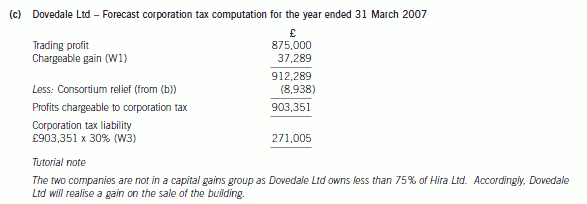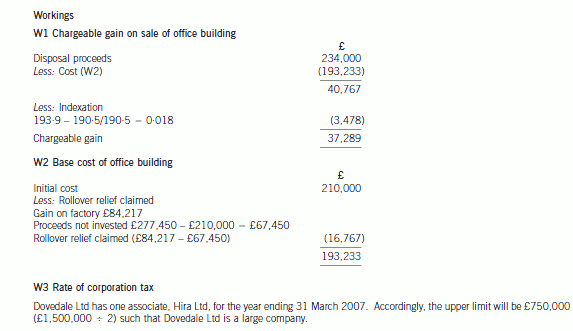ACCA考试F2考试试题每日一练(2020-08-14)
发布时间:2020-08-14
备考是一条艰辛而又漫长的旅程,只有掌握了学习方法,才能轻松应对。为了帮助大家更好的备考,下面51题库考试学习网给大家分享一些ACCA考试F2考试试题,备考的小伙伴赶紧来练练手吧。
1. T Co usually
has a quarterly labour cost of $2,500,000. Material costs (mainly copper) were
$3,000,000 in January to March. The worldwide cost of copper has increased in
the second quarter by 15%. Overheads were $45,000,000 in January to March.Which
TWO of the following variances for April to June are worth investigating as the
reasons for the variance are unknown?
A.Total direct labour variance of $400
adverse
B.Materials price variance of $450,000
adverse
C.Overhead expenditure variance of $4
,000,000 adverse
D.Sales volume variance of $3,000,000
favourable
答案:Overhead expenditure variance of
$4,000,000 adverse and Sales volume variance of $3,000,000 favourable
The direct labour variance is too small to
be material and is therefore not worth investigating.
The materials price variance can be
explained by the worldwide increase of 15% and so it is not worthy of
investigation.
The overhead variance is large and there is
no obvious explanation so this should be investigated.
The sales volume variance is large and
should be investigated even thoughit is favourable. Managers need to plan for
the future and need to know whether the increase in sales is a one off or likely
to continue into the next quarter.
2. Which of the
following defines the prime cost of a product?
A.The total production cost of a product
B.The material cost of a product
C.The cost of making the first unit of a
product
D.The total direct costs of a product
答案:The total direct costs of a product
The prime cost of a product is the total of
all the direct costs of the product.
3. Last month the
opening inventory was 6,000 units and the closing inventory was 4,000 units.
Using absorption costing this closing inventory was valued at $33,000.
Usingmarginal costing last month\'s profit was $50,000 and using absorption
costing it was $41,000.What was the variable production cost per unit last
month?
A.$6.00
B.$3.75
C.$4.50
D.$8.25
答案:$3.75
Inventory value per unit = $8.25 (33,000 /
4,000)
This value is made up of variable and fixed
costs as it was calculated under the absorption costing method.
The diference between marginal and
absorption costing profit is fixed cost.
以上就是51题库考试学习网分享给大家的ACCA考试F2考试试题的内容,希望可以帮助到大家。如果想要了解更多关于ACCA考试的试题,敬请关注51题库考试学习网!
下面小编为大家准备了 ACCA考试 的相关考题,供大家学习参考。
(c) The Shirtmaster division and Corporate Clothing division, though being part of the same group, operate largely
independently of one another.
Assess the costs and benefits of the two divisions continuing to operate independently of one another.
(15 marks)
(c) The Shirtmaster Group has decided to structure itself using two divisions who are dealing with very different markets,
customers and buying behaviours. In so doing the intention is to provide more value to the customer through a better
understanding of their needs. The existence of the two divisions also reflects the origins of the two family businesses.
Mintzberg in his work on organisation design and structure sees divisional configurations as being appropriate in relatively
simple and static environments where significant strategic power is delegated from the ‘strategic apex’ to the ‘middle line‘
general managers with responsibility for the performance of the division. Indeed one of the benefits cited for divisionalised
companies is their ability to provide a good training ground in strategic decision making for general managers who can then
progress to senior positions at company headquarters. Tony Masters’s reluctance to delegate real strategic decision making
power to the senior managers in the Shirtmaster division may be preventing those managers developing key managerial skills.
Using the Boston Box model one could classify the Shirtmaster division as a ‘dog’ with low market share in a market exhibiting
change but little growth. The Corporate Clothing division, by contrast, can be regarded as a ‘problem child’ having a small
share but of a growing market. Porter’s ‘better-off test’ needs to be met – are the two divisions better off being in the same
Group? As it stands there seems little synergy between the two divisions – there seems to be little evidence of the two divisions
sharing resources or transferring skills or learning between the two divisions. Their two value chains and systems are both
separate and different though on the face of it there are many activities that are similar. Operating independently may
encourage healthy competition between the two divisions and consequently better performance through better motivated staff.
Specialised competences such as Corporate Clothing division’s on-line response to customer orders and design changes are
more easily developed within a divisionalised structure. Performance can be clearly identified and controlled and resources
channelled to those areas showing potential. However, this may be at the expense of costly duplication of resources and an
inability to get the necessary scale to compete in either of their separate markets. Certainly, the lack of co-operation betweenthe divisions in areas such as information systems may lead to higher costs and poorer performance.
(c) Calculate the expected corporation tax liability of Dovedale Ltd for the year ending 31 March 2007 on the
assumption that all available reliefs are claimed by Dovedale Ltd but that Hira Ltd will not claim any capital
allowances in that year. (4 marks)


4 At an academic conference, a debate took place on the implementation of corporate governance practices in
developing countries. Professor James West from North America argued that one of the key needs for developing
countries was to implement rigorous systems of corporate governance to underpin investor confidence in businesses
in those countries. If they did not, he warned, there would be no lasting economic growth as potential foreign inward
investors would be discouraged from investing.
In reply, Professor Amy Leroi, herself from a developing country, reported that many developing countries are
discussing these issues at governmental level. One issue, she said, was about whether to adopt a rules-based or a
principles-based approach. She pointed to evidence highlighting a reduced number of small and medium sized initial
public offerings in New York compared to significant growth in London. She suggested that this change could be
attributed to the costs of complying with Sarbanes-Oxley in the United States and that over-regulation would be the
last thing that a developing country would need. She concluded that a principles-based approach, such as in the
United Kingdom, was preferable for developing countries.
Professor Leroi drew attention to an important section of the Sarbanes-Oxley Act to illustrate her point. The key
requirement of that section was to externally report on – and have attested (verified) – internal controls. This was, she
argued, far too ambitious for small and medium companies that tended to dominate the economies of developing
countries.
Professor West countered by saying that whilst Sarbanes-Oxley may have had some problems, it remained the case
that it regulated corporate governance in the ‘largest and most successful economy in the world’. He said that rules
will sometimes be hard to follow but that is no reason to abandon them in favour of what he referred to as ‘softer’
approaches.
(a) There are arguments for both rules and principles-based approaches to corporate governance.
Required:
(i) Describe the essential features of a rules-based approach to corporate governance; (3 marks)
(a) (i) Describe rules-based
In a rules-based jurisdiction, corporate governance provisions are legally binding and enforceable in law.
Non-compliance is punishable by fines or ultimately (in extremis) by delisting and director prosecutions.
There is limited latitude for interpretation of the provisions to match individual circumstances (‘one size fits all’). Some
have described this as a ‘box ticking’ exercise as companies seek to comply despite some provisions applying to their
individual circumstances more than others.
Investor confidence is underpinned by the quality of the legislation rather than the degree of compliance (which will be
total for the most part).
声明:本文内容由互联网用户自发贡献自行上传,本网站不拥有所有权,未作人工编辑处理,也不承担相关法律责任。如果您发现有涉嫌版权的内容,欢迎发送邮件至:contact@51tk.com 进行举报,并提供相关证据,工作人员会在5个工作日内联系你,一经查实,本站将立刻删除涉嫌侵权内容。
- 2020-08-14
- 2020-08-15
- 2020-08-15
- 2020-08-15
- 2019-01-04
- 2020-08-14
- 2019-03-16
- 2020-08-14
- 2019-01-04
- 2020-08-14
- 2020-08-14
- 2020-08-15
- 2020-08-15
- 2020-08-14
- 2019-01-04
- 2020-08-14
- 2019-03-14
- 2019-03-16
- 2019-01-04
- 2020-08-14
- 2020-08-15
- 2020-08-15
- 2019-01-04
- 2019-01-04
- 2020-08-14
- 2020-08-15
- 2020-08-15
- 2020-08-15
- 2020-08-14
- 2019-03-16